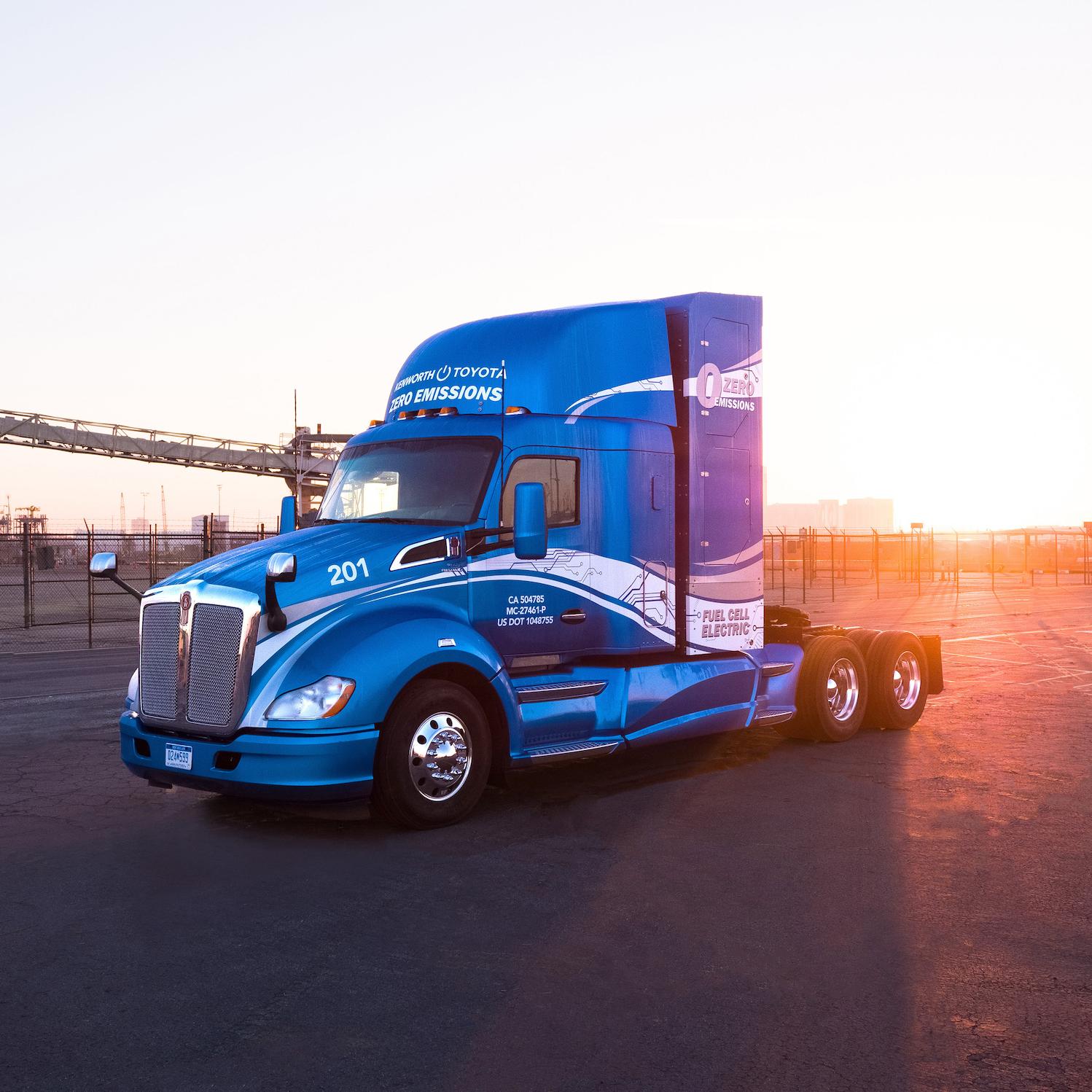Five Resilience Trends to Watch in 2019


Americans depend on our country’s transportation, energy and water supply systems. This infrastructure is under increasing stress as coastal storms, wildfires, drought and sea level rise. And there are countless questions on how to gain the political will, as well as the funds and financing for both infrastructure modernization and new infrastructure in the face of these growing hazards. We’re detecting these trends involving climate adaptation and resilience we expected will emerge or occur in 2019.
Resilience finance will go mainstream.
From the Climate Bonds Initiative to the Global Adaptation and Resilience Investment WorkGroup, finance sector experts are working to create mechanisms in the financial markets that make it more likely that assets under management will include more climate change resilience projects. That’s important, since the gap in resilience finance, which the Climate Policy Initiative doggedly tracks annually, grows wider. Creating principles for resilience-related green bonds is a high priority in the growing climate bond field.Resilience funding will increase.
Both the Department of Housing and Urban Development and the Federal Emergency Management Agency received increased mitigation-related appropriations, in part through the "Disaster Recovery Reform Act." Going forward, FEMA can use 6 percent of its Disaster Relief Fund on pre-disaster mitigation and HUD allocated $28 billion to support long-term disaster recovery in nine states, Puerto Rico and the U.S. Virgin Islands with $16 billion earmarked for risk mitigation. Rules and guidelines for accessing these competitive grants are on the agencies’ 2019 to-do list.Climate change-driven migration will be better organized.
Even as Louisiana grapples with the ongoing migration of families from their southern parishes because of climate-related issues (e.g., in Plaquemine Parish, 67 percent of the population left between 2000 and 2015), it and other states seek ways to create capacity and opportunity in receiving communities. We even have a term for this change: “Climigration.” It was coined by Robin Bronen, executive director of the Alaska Institute for Justice, to replace the commonly used misnomer “climate refugee.”Resilience news will become more ubiquitous.
The resilience-related news cycle will grow, driven by growing tragedies that define the resilience gap. Last year’s National Climate Assessment spotlighted the costs we already are experiencing:- Flooding along the Mississippi and Missouri rivers in 2011, triggered by heavy rainfall, caused an estimated $5.7 billion in costs.
- Drought in 2012 caused widespread agricultural losses to crops and livestock, and low water levels along the Mississippi River affected transportation of goods. resulting in an estimated $33 billion in losses.
- Annual federal firefighting costs have ranged from $809 million to $2.1 billion per year between 2000 and 2016.
Rural America will continue to bear the brunt of catastrophic loss.
Many Americans still live, work and play in smaller towns and cities where most climate change-related tragedy strikes – from Paradise, California, to Mexico Beach, Florida. Resources focused on smaller communities, such as Flood Forum USA and Online Help and Advice for Natural Disasters, are going to be even more in demand.Are you detecting other resilience-related trends? Please let me know. Contact me on Twitter.
Image credit: Bureau of Land Management/Flickr
What’s on the Horizon for Corporate Activism This Year?
2018 was quite the year for corporate activism and, of course, the brands taking stands movement. We’ve seen more companies taking a stand on the most stubborn social and political issues, including gender equity, data privacy, race relations, immigration and tariffs.
Well, if we had a crystal ball, what can we expect in 2019?
The next best option is available to us other than a crystal ball – and a fine one at that - is Barie Carmichael, senior counselor at APCO Worldwide, Batten Fellow at The University of Virginia’s Darden Graduate Business School and with the late James Rubin, is co-author of Reset: Business and Society in the New Social Landscape.
In Reset, Rubin and Carmichael argue that businesses must be aware about their “inherent negatives,” i.e., the negative impacts embedded in the company’s business model, strategies or policies. As these inherent negatives end up intertwined within a company’s business model, the long-term outcome could be that as the company grows, so do its negative impacts.
As a result, these inherent negatives can become powerful accelerants to public outrage and are difficult to remedy after the harm is done. Anticipating inherent negatives is a strategic challenge in the new social landscape for business where the “ramp time” for outrage can be instantaneous. Conversely, anticipating and mitigating inherent negatives early in the business life cycle can result in solutions that in the long run could benefit both business and society.
TriplePundit had the opportunity to catch up with Carmichael recently to hear what she thinks could unfold on the corporate activism front in the coming year.
Silicon Valley will be under even more scrutiny
“I think the hall pass on criticism for Silicon Valley and the wider technology industry has reached its expiration date,” said Carmichael as she started her conversation with 3p.
“The recurring pattern for Silicon Valley has been to prioritize gaining scale and then look at social impact. As these companies have grown, so have their products’ negative impacts on everyday life — from hate speech or privacy concerns the potential impacts on the social development of youths — making it a daunting task to retroactively address. Just look at how more parents in Silicon Valley are prohibiting screen time for kids — that should tell you about what’s happening in this space,” observed Carmichael.
Carmichael believes that with the U.S. federal government’s reticence to enact substantive regulatory guardrails, controversy will continue to surround companies like Facebook, Google and Twitter during 2019. We may see some attempts at self-regulation – such as Apple’s move last year to notify users about their weekly screen time – but when considering the market penetration these companies have achieved, look for more visibility on their social impact to hit the newswires and public pressure to modify their strategies.
The struggle with next-generation technologies will hardly be a Silicon Valley phenomenon. As the Internet of Things (IoT) becomes more integrated into everyday products, watch for additional traditional manufacturers to face similar challenges. “But they may benefit from seeing the issues in advance and take preemptive safeguards,” said Carmichael, who has long argued that companies .
The ability to innovate and be nimble in today’s economy is often a top concern for CEOs as they consider future business challenges. “But innovating without fully anticipating or imagining the social footprint of these innovations is like playing tennis without a net or without boundary lines,” insisted Carmichael. “Like a net and lines in a tennis match, social impact is a real factor that must be considered. Otherwise there is a risk that a new innovation cannot be sustainable – or, let’s put it this way, we won’t have a real tennis match.”
From Carmichael’s point of view, having this line of sight is central to sustainable innovations. “Being agile and innovative requires more than a good idea. It requires active leadership that cultivates curiosity, diverse perspectives and an engaged speak-up culture,” she said.
Scale could catapult more companies into trouble
For years in business school, we were told to discover an underserved market, develop that product or service and then finally, exploit it. Unfortunately, there have been many examples of where too much focus on a supposedly innovative product or service, without anticipating unintended negative impacts, can end up causing headaches for companies, their customers and executives.
“Take a look at JUUL, whose damage was accelerated by rapid scale,” explained Carmichael.
The e-cigarette startup was launched by a couple entrepreneurs who wanted to find a healthier alternative to smoking. The problem, however, was that teens took to JUUL like wildfire – and it turns out the brands’ nifty and flavorful products contained way more nicotine than conventional cigarettes. JUUL has changed its marketing tactics, but so far they have not been enough to satisfy parents and public health advocates; and its customers have not been happy with the changes either. As the controversy over these products surged last fall, the company was silent on Twitter for over a month until it responded to a U.S. Surgeon General’s advisory on e-cigarettes. JUUL has since sold a 35 percent stake in the company to Altria.
Pivoting back to the tech sector, watch for Amazon to be at the center of more angst over its decision to expand in the Washington, D.C. and New York City metropolitan areas. “Amazon will be hit as their physical presence hits Northern Virginia and NYC; like the experience in Seattle, remember the experience of Seattle and Silicon Valley, and look for high visibility criticism on the social impacts — as in how the influx of workers could strain access to affordable housing while substantially increasing traffic gridlock,” noted Carmichael.
More employee-driven activism against companies’ labor policies
Watch for more employees, across many industries, to speak out publicly about their companies’ policies and business decisions, advised Carmichael. After all, statistics on sexual harassment show the odds are that any company of any size has had unreported sexual harassment as well as gender pay issues.
“But the difference today is employees are benefitting from a strong labor market - they can speak up knowing they can get another job,” said Carmichael. “Furthermore, they have the online means to form communities of protest.” Online tools such as coworker.org can be monitored for early signals of what will drive employees to take grievances with their employers public.
Increased pressure from investors and employees on more issues
According to Carmichael, the data shows companies who perform well in areas such as diversity and sustainability are more likely to have better long-term growth prospects. Investors are starting to flag these challenges, as well as employees. As Carmichael explained in her blog:
“Corporations are now entering what meteorologists call a convergence zone, where prevailing systems interact to disrupt the status quo. External forces like investor activism are converging with internal forces like employee activism to disrupt business and change the way boards and c-suites are forced to see and respond to risk.”
The latest predictions about the economic impacts of climate change will also add fuel to ongoing concerns about environmental sustainability. Hence an interesting question for 2019: will this data help influence the markets and consumer behavior? After all, with the relaxation of corporate average fuel economy (CAFE) standards enacted under the Trump White House, more consumers have moved away from smaller cars and to larger crossover vehicles and trucks, as Ford and GM have been withdrawing from the sedan business. During the 1970s, spiking gas prices drove consumers to smaller cars. Will consumers’ concerns on climate change change their purchase behavior, absent the personal impact of rising gas prices?
Don’t forget the positives
The news isn’t all negative on the corporate activism front. Look for businesses to step in and fill the vacuum that has been left by government inaction to the most intractable social challenges. And they will often do so by entering into creative partnerships with organizations that are in vastly different sectors.
One example Carmichael points out is a recent plan announced by Smithfield Foods and Dominion Energy. The companies have agreed to each spend $125 million over the next decade to capture methane gas from hog lagoons in three U.S. states – a huge step in waste-to-energy technology if this project succeeds. Tyson Foods and the Environmental Defense Fund recently announced a partnership with the goal to accelerate sustainable food production. The jury on these partnerships’ success is still out but such solutions have the potential to be good for business and society, which is now the new “sweet spot” for business strategy.
The upshot, Carmichael explained as we wrapped up this interview, is to be proactive and vigilant.
“Today, businesses that preemptively anticipate social impact from inherent negatives and innovate shared solutions are positioned to thrive in this new social landscape for business, she said. “But that requires a critical examination of the social impact of the full business lifecycle, including the business model itself. Each year, more than 70 percent of headline producing crises concern matters within management’s control. Seeing it coming requires strong leadership that cultivates a speak-up culture to break through the blind spots.”
Image credit: Patrick Nouhailler/Flickr
12 Plant-Based Foods Coming to Market in 2019


Impossible Foods' meat-free burgers are coming to supermarkets near you this year.
With the global population set to reach 10 billion by 2050, current levels of meat consumption are “incompatible with keeping global temperatures from rising more than 2 (let alone 1.5) degrees Celsius,” the World Economic Forum concluded in a new report, as quoted by Food Dive.
Fortunately, the plant-based protein movement shows no signs of slowing down: 34 percent of Americans plan to incorporate plant-based foods into their diet this year. U.S. sales of plant-based alternatives to meat, dairy and eggs grew by 17 percent from 2017 to 2018, compared to only 2 percent for the food sector overall, according to market research from Nielsen.
“Given the indicators we’re seeing, we believe the growth rate is likely to accelerate,” Caroline Bushnell, senior marketing manager for the nonprofit Good Food Institute, which commissioned the research, wrote in a blog post. Indeed, the number of plant-based food investment deals rose by 30 percent in the past year alone, paving the way for new startups, product offerings and partnerships across the sector—and a whole lot more vegan choices in the mainstream market.
“The past few years have been all about captivating audiences with anticipation of these products,” Mike Lee, co-CEO of Alpha Food Labs, a platform for launching healthy and sustainable food companies, told Forbes in December. “In the next two years, it’ll be all about getting to market.” Here are a few standouts, coming soon to restaurants and grocery shelves near you.
The Impossible Burger is coming to grocery stores
We first sampled the Impossible Burger during the COP21 climate talks back in 2015. California startup Impossible Foods has since released its signature vegan burger at almost 5,000 restaurants across the U.S., and its newest burger recipe will hit grocery shelves for the first time in 2019.
A unique biochemical process gives the plant-based Impossible Burger a distinctly meaty flavor, texture and appearance—making it a fast hit with vegetarians and flexitarians alike. The meat alternatives upstart has sold around 13 million burgers since launching in restaurants in 2016, and its Oakland production facility can churn out 500,000 burgers a month—which puts exponential growth firmly on the table, Forbes reports.
Beyond Meat triples production capacity in advance of likely IPO
Impossible Foods and its biggest rival, Beyond Meat, will continue to go head-to-head in 2019. For its part, Beyond Meat plans to increase its production capacity threefold to keep up with demand, having outsold conventional beef patties in some retail locations, according to the Good Food Institute.
The company, which saw 70 percent revenue growth in 2018, is likely to go public this year, Forbes reported. Its investment in a 26,000-square-foot research facility also indicates the company is developing new products to complement its existing portfolio of vegan burgers, sausages, chicken strips and ground beef substitutes.
Good Catch brings vegan seafood to store shelves
Based in Newton, Pennsylvania, Good Catch offers a solution to overfishing with a line of plant-based seafood made from beans like chickpea, lentil and fava—and investors are interested, to the tune of $8.7 million in its latest funding round.
The company will launch its signature line of plant-based tuna, along with other vegan seafood products, in grocery stores this year, according to the Good Food Institute.
Califia Farms brings oat milk to market
Califia Farms already offers an expansive product portfolio—including almond, cashew and coconut milks, as well as dairy-free yogurts, creamers and cold brew coffees. Last week, the California-based company added a new ingredient to the list with its first line of milks made from North American whole grain, gluten-free oats.
Along with an unsweetened version, the line includes a Barista Blend to complement the company’s cafe-focused offerings, wellness publication LiveKindly reported. The brand, backed by celebrity names like actor Leonardo DiCaprio and supermodel Karlie Kloss, closed more than $50 million in its latest funding round.
Purple Carrot set to double in size this year
Having launched in 2014, Purple Carrot is a relative veteran in the ever-expanding subscription meal kit segment. Its ready-to-assemble prep kits contain only plant-based ingredients—and it’s still the only 100 percent vegan meal kit company out there.
After receiving a $4 million investment from Fresh Del Monte Produce last year, the company will expand its line of kits to include breakfast and lunch options in 2019. Purple Carrot has grown by more than 300 percent over the past two years and is expected to double in 2019, partly thanks to the expanded menu, Fast Company reported.
Chobani goes dairy-free
Chobani, known for its Greek yogurts, launched its first dairy-free product line this month—which includes five probiotic-rich yogurts and four yogurt drinks made from cultured coconut products.
Founder and CEO Hamdi Ulukaya is a trailblazer in the corporate world—most notably for his fearless support of immigrants and refugees. His positioning around Chobani’s debut in the plant-based foods segment was similarly audacious. "We have a belief: if we can't make something better, we don't make it at all. And for some time, we've felt that people deserve better non-dairy options," he said in a statement. “We've come up with something that's much better than what's out there … it's a game-changer for plant-based products."
Starbucks releases new vegan milks
Starbucks released two ready-to-pour almond milk drinks at grocery stores across the country this month. The company made almond milk available at more than 4,600 retail stores in September, following the addition of coconut milk in 2015.
Taco Bell tests vegetarian menu
Taco Bell will start testing its first vegetarian menu in 2019, CNBC reported last week. The fast-food chain owned by Yum Brands is already known as veg-friendly: a number of its meat-free menu options were certified by the American Vegetarian Association back in 2015.
Carl’s Jr. releases vegan burger in the U.S.
The Beyond Burger will hit the menu at more than 1,000 Carl’s Junior locations across the U.S. this month, marking Beyond Meat’s largest restaurant partnership yet. The new Beyond Burger is already available at all A&W locations across Canada.
McDonald’s flirts with plant-based foods
McDonald’s appears to be warming up to the idea of plant-based foods—particularly after its McVegan burger, released in Finland and Sweden last fall, was met with acclaim across the Internet. "Plant-based protein is something we’re keeping our eye on," Lucy Brady, SVP of corporate strategy for the fast-food giant, said at a conference in December, as quoted by vegan food industry outlet VegNews.
The fast-food giant launched its first vegan Happy Meal in the U.K. this month and released the McAloo Tikki, a vegan sandwich popular in India, at its flagship Chicago restaurant in December.
Nestlé eyes the vegan market
Nestlé plans to launch the plant-based Incredible Burger under its Garden Gourmet brand this spring. The global food giant is developing additional plant-based proteins at its research and development center in Lausanne, Switzerland, Bloomberg reported. Potential 2019 offerings include purple walnut milk made with blueberries and a latte containing spirulina algae.
Unilever embraces plant-based foods through M&A
Unilever acquired The Vegetarian Butcher, which distributes plant-based meat products to more than 4,000 outlets in 17 countries, at the end of last year—paving the way for more vegetarian and vegan options from the global packaged goods giant.
“[The Vegetarian Butcher] will fit in well within our portfolio of ‘brands with purpose,’ which have a positive social impact, are better positioned to meet the needs of consumers and are growing faster,” Nitin Paranjpe, president of foods and refreshment at Unilever, told Food Business News. “Importantly, this acquisition will help us to accelerate our journey toward more plant-based food.”
Image credit: Courtesy of Impossible Foods
After the Wildfires, Question of Who Pays Keeps Burning


California’s wildfire season may be behind it now, but the recovery from the 2018 wildfires, the most devastating on record, is far from over. Last week President Trump threatened to cut off federal emergency aid to California for the continued recovery. And this week, the CEO of California power company PG&E is stepping down as the company faces massive liabilities related to the deadly fires. The worst of the fires is over, but the situation is far from cooling down.
PG&E CEO Geisha Williams has stepped down as the company faces billions of dollars in potential liabilities related to deadly wildfires, the company said on Sunday. PG&E acknowledged in a regulatory filing in November that it could face “significant liability” in excess of its insurance coverage if its equipment was found to have caused last year’s Camp Fire in Northern California, which claimed 85 lives. Reuters reported earlier this week that PG&E was talking to banks about multimillion dollar bankruptcy financing.
PG&E said Monday it sees bankruptcy as the “only viable option” for an estimated $30 billion liability for damages from the two years of wildfires, a sum that would exceed its insurance and assets. But as reported in The New York Times, PG&E’s predicament could be an early indicator of a wider economic toll from climate change, which is making wildfires more frequent and destructive.
Who pays? Not Trump.
The question remains, who pays for climate-related natural disasters like the California wildfires? According to the Times article, energy experts said PG&E’s intention to file for bankruptcy was one of the first major financial casualties from climate change — and far from the last.
President Trump doesn’t want the federal government to pay. There is still no clarity on his announcement last week, without evidence, that the state would not need the funds if the forests were properly managed. This has been refuted by scientists and fire officials who say that climate change, not forest management, is to blame for the California wildfires.
In fact, the Fourth National Climate Assessment issued by Trump’s administration in November 2018 predicted increasing wildfires due to climate change. The scientists concluded that by the middle of this century, the annual area burned in the U.S. could increase two to six times from the present.
Forestry industry on alert
All of these events weigh heavily on the mind of John Andersen, Forest Policy Director with the Mendocino Redwood Company (MRC) and Humboldt Redwood Company (HRC). Since 2011 the forestry company has provided 100 percent of the framing lumber sold in 40 Bay Area Home Depot stores, all of it certified by the Forest Stewardship Council (FSC) as required by Home Depot’s wood purchasing policy.
“In the state of California, we have certainly seen wildfires intensify unlike anything we’ve seen before,” Andersen told TriplePundit. “We have a lot invested in this land. Forestry is a very long-term commitment and fire is a great concern to protecting that investment.”
A total of 1.6 million acres burned in the 2018 wildfires, more than in the past decade. The combination of the all too frequent wildfires and drought amplified by climate change poses a growing threat to California's forests.
Andersen said the approximately 440,000 acres of redwood and Douglas-fir timberlands along the north coast of California owned by MRC and HRC were not affected by the 2018 wildfires but added “we have had repeated incidences of wildfires on our land, going back to 2008.”
He said MRC and HRC are actively managing the land to minimize the danger and impact of wildfires, thinning out forests and creating fuel breaks, a gap in vegetation or other combustible material that acts as a barrier to slow or stop the progress of a wildfire. Such practices he said are common for the “vast majority of forestry land in California, which is owned by families who have a long-term vision for their lands.”
Home Depot depends on California redwoods
For Home Depot, which sources 94 percent of its wood from North America, and depends on MRC and HRC for its Bay Area supply of lumber, there is a lot at stake in ensuring that forests remain as resilient as possible in the face of increasing wildfires. None of its supply of redwood was affected by the fires, according to a company spokeperson.
Home Depot, the nation's largest home improvement retailer, stopped selling wood from environmentally endangered areas in 2000 following protests by the San Francisco-based Rainforest Action Network and other environmental groups for its sourcing of old growth wood. Since then, it has positioned itself as industry leader in sustainable wood practices. North American forests are critical to its business and they’ve been increasing in size steadily. As Home Depot notes, North American forests have grown by 18 million acres since 1990.
Keeping those forests intact and safe from wildfires is top of mind not just for forestry companies and retailers like Home Depot but more urgently for those Californians who live with the prospect of fires that grow ever more dangerous.
The question of who pays will burn with equal intensity.
Image credit: U.S. Forest Service/Flickr
Barclays Draws Climate Change Roadmap for Decarbonization


Clean tech fans and advocates for renewables have long made the case that decarbonization is a bottom line twofer, providing direct financial benefits to companies while contributing to a more sustainable planet for all. Now the giant U.K. banking firm Barclays has taken that framing and articulated it as a roadmap for action under the title, “Energy and Climate Change.”
Having your climate change cake and eating it, too
For those expecting a clear statement on the urgency of climate action and decarbonization, the statement may be somewhat disappointing.
Right from the start, Barclays emphasizes that banks have a leading role in ensuring that the world’s energy needs are met. That type of framing has been used in the past by ExxonMobil and other fossil fuel stakeholders.
Barclays does start off with an introductory statement that lays out the challenge in no uncertain terms:
“Climate change represents one of the greatest challenges faced by the world today.”
However, the very next sentence includes the “energy needs” hedging language:
“Banks have an important role to play in ensuring that the world’s energy needs are met while helping to limit the threat that climate change poses to people and to the natural environment.”
The introduction goes on to emphasize that banks occupy a powerful position in terms of climate action:
“Banks have a direct environmental and social impact through their operational footprint, as well as indirectly in the way that they mobilize capital, advise clients and develop products.”
However, once again it reverts to hedging language again:
“Our aim is to help facilitate the transition to less carbon intensive sources of energy, while supporting economic development and growth in society by helping to ensure the world’s energy needs are met responsibly.”
“Clearly they still have a long way to go”
Clean tech stakeholders would argue that decarbonization itself is the most effective way to ensure that “energy needs are met.”
The argument for decentralized renewable energy is evident in off-grid and underserved communities, where expensive transmission lines and central power stations have failed to penetrate.
Christian Aid is one organization that has been putting pressure on Barclays to decarbonize, and quickly. In an emailed statement reacting to the new roadmap, Christian Aid lauded the banks’ decision to stop financing coal power and coal mining globally.
However, the organization also noted that Barclays will continue a financial relationship with coal companies and, notably, continue to finance tar sands oil.
Barclays certainly does not hide those intentions in the Energy and Climate Change roadmap. Of the three main areas of action Barclays lays out, one of these is:
“. . . Taking a responsible and sustainable approach to the necessary financing of sources of energy that are more carbon intensive or those with higher environmental impact . . .”
As Christian Aid senior advisor Ashley Taylor puts it, "Clearly they still have a long way to go.”
So, what does this actually do?
As Taylor notes, the Barclays climate change roadmap boasts one important achievement right off the bat: it leaves the climate action “laggards” far behind.
In the other two main areas of action, one commits Barclays to reducing the carbon footprint of its own operations.
That’s not particularly groundbreaking, considering the progress that many other major global companies have been making.
What is newsworthy is the third area, in which Barclays pledges financial support for renewable energy stakeholders and other businesses that tackle global environmental issues.
In this area, Barclays makes the case for decarbonization as an economic driver, citing “economic benefits” in the area of $26 trillion by 2030, including more than 65 million new jobs.
Barclays also cites the $90 trillion in new investment opportunities, in support of new technologies and efficiencies as well as more sustainable infrastructure.
The roadmaps commit Barclays to stepping up “green opportunities” across all sectors of its business, coordinated through a newly established Green Banking Council.
The commitment includes an important caveat, though:
“At the same time, we are mindful of the complex challenges faced by countries seeking to strike a balance between achieving sustainable economic development and industrialization, while trying to mitigate climate change and adapt to its consequences.”
In sum, if Barclays intends to cement a leadership role in sustainability and impact investing, at some point it will have to stop hedging and start committing to rapid decarbonization.
On the other hand, the global energy market is already beginning to do some of the heavy lifting for Barclays and other banks.
As the cost of solar and wind power continues to drop, high risk investments in fossil fuels are becoming more difficult to justify.
To cite one recent example, the International Renewable Energy Agency (IRENA) has just come out with a new report, finding that noted that solar power is now competitive with fossil fuels in the oil-producing Gulf Cooperation Council countries.
It could be that the most financially responsible path to “energy security” is renewable energy after all.
Image credit: Hakan Dahlstrom/Flickr
Toyota's Renewable Hydrogen Puzzle Comes Through in California


The Toyota Motor Company has staked its reputation on fuel cell vehicles, and despite all the nay-saying it looks like the automaker is on track to crack the market open with the help of renewable hydrogen. In the latest development, last week Toyota announced a new partnership with the Kenworth Truck Company to produce H2-powered trucks for the California market, where a renewable hydrogen fuel mandate is in force.
Renewable hydrogen for fuel cell trucks
One of the problems that skeptics have with fuel cell vehicles is the lifecycle factor. Hydrogen is a zero-emission fuel at the tailpipe, but the main source of hydrogen today is fossil natural gas. That means it is loaded with baggage, including the local air and water impacts of natural gas operations as well as greenhouse gas emissions all along the supply chain.
Toyota is already working on sustainable solutions that involve using renewable energy to "split" hydrogen from water. The new Kenworth partnership could draw on another pathway that substitutes renewable biogas for natural gas.
Last April, Toyota announced provisional funding for a biogas-to-hydrogen partnership with Shell Oil Products (operating through Equilon Enterprises). The funding was contingent on approval from the California Energy Commission. It would provide for Shell to build a hydrogen fueling station at the Port of Long Beach, California. The hydrogen would come from Toyota's Tri-Gen facility, which uses 100 percent renewable biogas.
The California angle is important because the state is aggressively promoting fuel cell vehicles, and its long-range planning includes a renewable hydrogen mandate.
Toyota is also working on renewable H2 production in a partnership with 7-Eleven in Japan. If the project works out, it could provide a pathway for 7-Eleven to carry out its ambitious expansion plans in the U.S., without a consequent increase in its carbon footprint.
From one truck to ten trucks . . . to 800
The Kenworth partnership builds on a fuel cell truck pilot project that Toyota launched in April 2017.
The partnership is expected to result in the delivery of 10 Kenworth T680s powered by Toyota fuel cell electric powertrains. The T680 is known for superior high-efficiency aerodynamics, which may account for Toyota's interest in Kenworth.
The trucks will be assigned to a territory that reaches from ports in the Los Angeles basin to San Bernardino and other inland areas. The two companies anticipate that the fuel cell powertrain will provide a range of more than 300 miles under typical driving conditions.
That's a big step up from one truck. It also represents a recognition that the competition is heating up in the fuel cell truck sector, including the renewable hydrogen angle.
Here in the U.S., the startup Nikola is already planning a national network of fueling stations for its new fuel cell truck. Many of those stations will produce renewable hydrogen on site through solar-powered electrolysis.
The Nikola truck is not yet in production, but last May the company reached a pre-order agreement with AB InBev that could add upwards of 800 fuel cell trucks to its fleet, so stay tuned for more on that.
More bad news for natural gas
On a somewhat sour note, the supply of renewable hydrogen will probably not meet demand in the foreseeable future, especially if companies like Toyota and Nikola push more fuel cell vehicles onto the road.
One red flag is a mammoth new $150 million liquid H2 production facility planned by France-based Air Liquide, to be built in an as-yet undisclosed location in the western U.S. The facility is billed as the first of its kind aimed at fulfilling demand in the energy sector.
The idea seems to be to take advantage of the abundant fossil resources in the area.
The good news is that the facility is being built with a focus on the California market, so renewable resources may also be on the table.
In addition, Air Liquide has already reached a supply agreement with the U.S. company FirstElement Fuel. First Element currently produces about one-third renewable hydrogen and is eyeballing a fossil-free future through its "True Zero" brand of H2.
Air Liquide itself also seems to have determined that the future of H2 is a low-carbon one. The company's "Blue Hydrogen" commitment involves a pledge of at least 50 percent carbon-free hydrogen by 2020 for energy applications.
In related news, last year Amazon made a $600 million bet on fuel cell forklifts with the U.S. company Plug Power, which has also articulated a clean fuel vision based on renewable H2.
Image credit: Hydrogen fuel cell truck via Toyota.
New Global Hub Helps Companies Avoid the Ethical Pitfalls of AI


Business is in fast pursuit of artificial intelligence (AI) as the next frontier in creating new products and services as well as boosting profits. And this shift reaches far beyond technology firms: companies in sectors from banking to retail to energy, security and healthcare recognize the allure of AI, with new applications emerging every day.
But are companies thinking about the ethical pitfalls around privacy, unintended bias and misuse of data that could stop their innovation in its tracks?
Recent headlines would indicate otherwise. A voice recognition platform was found to have gender bias. A crime prediction algorithm targeted black neighborhoods. And an online ad platform was more likely to show men highly paid executive jobs.
Ethical concerns around bias, fairness, safety, privacy, transparency and accountability associated with AI are growing. With an estimated $1.2 trillion value in 2018 according to Gartner, the AI industry isn’t about to slow down any time soon. In the meantime, a number of concerned voices from within industry, academia and civil society are calling for a more thoughtful approach that balances innovation and responsibility.
Nordic hub offers guidance
To that end, the AI Sustainability Center (AISC) just launched in Stockholm to serve as a global multi-disciplinary hub to promote what its founders call “responsible and purpose-driven technology.”
Artificial intelligence is capable of a speed and capacity of processing that extends far beyond that of humans, but it cannot be trusted to be fair or neutral. That has led to what AISC described as unintended effects, such as misuse of data leading to privacy intrusion, data and algorithm biases leading to discrimination.
“The broad use of personal data and AI systems are posing ethical risks which are difficult to predict and understand," says AISC co-founder Elaine Weidman-Grunewald, former senior vice president and chief sustainability and public affairs officer for Ericsson. “Even with the General Data Protection Regulation [GDPR, a sweeping privacy policy in the European Union] as a starting point, the regulatory frameworks can’t keep up. We need to develop sustainable AI frameworks and strategies that can help companies keep humanity and fairness at the core of AI applications.”
Companies, she said, need to not only look not at how digitalization will improve the bottom line, but also examine the sustainability gains and risks inherent in the technology. “Our mission is to help companies be fair and inclusive and act proactively as these AI systems mature,” Weidman-Grunewald told TriplePundit.
The center aims to develop operational frameworks that identify and address pitfalls and the broader ethical implications of AI and conduct multidisciplinary research. AISC says it wants to guide companies, tech startups, regulators and policymakers to make “human-centric decisions in the AI area.”
AISC brings together companies, academic institutions, public agencies and civil society. Partners include technology investment firm Atomico, media company Bonnier, mobile network operator Telia Company, Microsoft and the KTH Royal Institute of Technology in Sweden.
Costly ethical pitfalls
The center focuses on four specific areas of ethical pitfalls in AI: the misuse of this technology and data, leading to privacy intrusions; immature AI (with facial recognition software’s racial bias a prime example); the bias of the creator (where a programmer’s values or biases are intentionally or unintentionally embedded in an algorithm, i.e. “the white guy problem”); and data and machine bias, in which the data or machine is not reflecting the reality, or preferred reality.
“We’re at a crossroads where we need to collectively chose a purpose-driven and responsible approach to AI,” AISC co-founder Anna Felländer, a digital economist and former chief economist for Swedbank, told TriplePundit.
"Short-term profits are seductive, yet the unintended pitfalls are costly—both from a financial and societal perspective," she said. "We are convinced that responsible and purpose-driven AI can be combined with profitable business models."
Developing best practices
Many companies have made missteps in their use of AI that underscore the need to address the technology’s ethical side. Algorithmic biases around gender, for example, are showing up on Google’s search platform. Amazon scrapped a secret AI recruiting tool after it showed a bias against women. Amazon was also found in a 2016 analysis by Bloomberg to have used an algorithm that made same-day delivery less likely in ZIP codes that are predominantly black.
To address these issues, a number of companies are introducing tools to detect bias or developing policies to avoid unintended bias in AI. Last fall IBM launched the Fairness 360 Kit to scan for signs of bias, recommend adjustments, and analyze how and why algorithms make decisions in real time.
Microsoft published an extensive report on “the future computed” last year and has stated the need for principles, policies and laws for the responsible use of AI.
Vahé Torossian, corporate vice president for Microsoft and president of Microsoft Western Europe, says that while the benefits of AI are “significant,” companies need to show “accountability to ensure it is used responsibly and ethically, to the benefit of all. Cooperation across industries has never been more important as this technology becomes increasingly pervasive.”
A group of companies including Google, Microsoft, Amazon, Facebook, Apple and IBM formed the Partnership on AI in 2016 to develop industry best practices to guide AI development.
But are these efforts enough? AISC’s Weidman-Grunewald thinks that what is needed is a robust risk-assessment framework to guide decision-making around AI. That will be one of the first tasks of the center, she said.
“There’s nothing really out there to help companies navigate the sustainability elements of future technology. And that’s especially concerning when you think about how fast the technology is evolving,” she told TriplePundit.
“The ‘move fast and break things’ approach to product development has resulted in too many examples of AI causing harm,” Kristofer Ågren, head of data insights for Division X for Telia Company, told TriplePundit. “We think it is imperative to work proactively with identification and mitigation of risks as we increase the use of AI in our data-driven products, such as Crowd Insights for smart cities."
Crowd Insights are insights from anonymized data designed to help cities better understand their citizens as they seek to improve public transport and urban planning, among other things, according to Telia Company. While Telia says it puts privacy first by anonymizing and aggregating the data based on groups, not individuals, a number of studies have pointed out the privacy risks of compiling mobility data.
“In the end,” Ågren says, “customers and consumers will favor companies that act in their long-term best interests. Working with experts and other partners in AISC will support the development of our skills, processes and tools and allow us to continuously apply the latest knowledge.”
Image credit: GLAS-8/Flickr
The Future of Automotive Mobility Holds Some Surprises


Despite the increasing number of choices in personal mobility available today, the desire to own vehicles has not changed much over the last three years. Perhaps surprisingly, when asked if “owning a car is important,” consumers under the age of 30 agreed with the highest percentage rate.
This was one of the findings of a 2018 survey on automotive mobility involving 8,000 people in 13 countries spread across North America, Europe and Asia that the consulting firm Arthur D. Little recently concluded. The 2018 survey updates findings from a similar one undertaken by the firm in 2015 involving 6,500 people, and over time, some trends have emerged. We spoke with Dr. Klaus Schmitz, a partner at Arthur D. Little involved in the study, to find out more about their discoveries.
Car ownership as important to the under-30s. Isn’t this counterintuitive?
First off, we were interested in delving into the statistic that people under 30, as a group, are the most likely to answer affirmatively that car ownership is important to them (53 percent). This might seem surprising because, after all, haven’t we heard that millennials are more interested in their smartphones than driving?
Dr. Schmitz agrees, saying it is indeed, “counter industry wisdom." But when the same question was asked in 2015, precisely the same percentage of under-30s said ownership was important then as well—a response that Dr. Schmitz says caused much discussion that year. However, with the results being consistent in the 2015 and 2018 studies, researchers have concluded this finding is not a statistical error.
To be clear: the 8,000 people surveyed were pre-qualified as being in possession of a driver's license (whether or not they regularly drove or owned cars). Therefore, we suggested the data may be skewed toward drivers and therefore doesn’t necessarily accurately represent the entire population. While to some extent that may be true, Dr. Schmitz said, a high percentage of people in all age groups have a driving license.
In any case, as the survey was careful to include balanced numbers by age group, the comparison between the age groups is certainly valid. What the researchers found to be a clear trend is that the perceived importance in owning a vehicle decreases with age. For example, people in the 45 to 65 age group answered that car ownership is important at the rate of only 33 percent and 34 percent in the 2015 and 2018 surveys, respectively.
Unfortunately, the survey doesn’t provide a definitive answer as to why younger respondents found ownership more important than we might have expected, but Dr. Schmitz thinks it might be explained by the way survey questions are asked in general. For example, if you ask, “is your smartphone” important, you might find the under-30s answer “yes” at the highest rate, and you might even find they say it’s the most important thing to them. But that doesn’t mean they wouldn’t say car ownership is also important to them—they are not mutually exclusive desires, and as such, both things can be true at once.
How robust is the sharing economy in the automotive space?
Another potentially surprising finding is that although we hear a lot about the sharing economy, it does not appear to be a growing trend as far as automobiles are concerned.
The idea of peer-to-peer car sharing is down overall. When asked, “would you share your private car during times when you do not need it?” in the 2018 survey, 23 percent of participants said they would, falling by three percentage points since 2015. Notably, there is variation by country. For example, in China, 42 percent answered yes to this question (up from 39 percent in 2015) while in Japan just 9 percent said they’d consider it (down from 17 percent in 2015).
Again, it’s not entirely clear why country variations exist, but Dr. Schmitz says since the survey focused only on commercial peer-to-peer (PTP) sharing (i.e., private vehicle owner-sharing via a commercial app), variation might be explained by what offerings are available in each country; maybe some operations are being better marketed in some places than others, for example.
It should be noted here that sharing does not encompass the likes of Uber or Lyft, as these are seen as e-hailing services, more akin to taxi services. But still, Dr. Schmitz is less than bullish on the future of PTP car sharing (or short-term, by-the-hour car rentals), seeing these as likely transitional options until self-driving cars come into commercial operation.
Skepticism exists in the adoption of autonomous vehicles
The survey also found some apparent cooling of people’s comfort level with driverless cars. Though there’s a lot of buzz and a lot of investment in developing self-driving cars, otherwise called autonomous vehicles (AVs) when asked, “would you use cars that are fully autonomous” the number of people answering either, “yes they would” or “perhaps” has fallen by 7 percent overall between 2015 and 2018, with only 57 percent now saying they would ride in an AV.
The growing trust gap is subject to regional variation, though, with people in China being most comfortable with the idea of riding in AVs (78 percent) while respondents in France expressed the least comfort (47 percent).
Dr. Schmitz says the decline in trust in AVs is likely explained by reports of accidents involving fully autonomous vehicles, as well as reports of drivers placing an over reliance on advanced semi-autonomous driver assistance systems, which have led to either collisions or death recently.
Indeed, getting AV technology right is critical. Dr. Schmitz says although AVs will certainly be safer in the long run than having humans behind the wheel, he asserts, “AVs need to be at least 100 times more safe than cars driven by humans.”
For example, there are approximately 4,000 fatalities a year involving motor vehicles in Germany, so even one percent of that amount—40 casualties—would be still too many people to be killed by machines, he says. AVs will need to be held to a higher standard of safety by orders of magnitude in order to be viable.
Data privacy concerns also extend to autonomous vehicles
Another concern respondents have with AVs is data privacy. Again, regional variation exists here. Unsurprisingly, in Germany people are concerned about the security of their personal and private data with regard to autonomous driving, but Dr. Schmitz was surprised to find that people in the U.S. (where historically privacy has been less guarded than in Europe) are similarly concerned.
In fact, when asked “how concerned are you about security of your personal and private data with regard to autonomous driving?”—on the scale of “no issue at all” to “showstopper”—30 percent of U.S. respondents answered "showstopper," a rate even higher than people in Germany (21 percent). Conversely, only 7 percent of responders in China were similarly worried.
Good news—power trains will become cleaner
The drive trains in future vehicles, on the plus side, look like they are going to get significantly cleaner. Fifty percent of those surveyed said they would pay more for both hybrid and full-battery electric vehicles, while 41 percent said a factor for switching to electric vehicles would be their own contribution toward fighting climate change.
Significantly, while 70 percent of respondents surveyed own a gasoline-powered car, only 35 percent expect the drive train on their next vehicle to be gasoline-powered—most said they planned to purchase a hybrid, plug-in hybrid or a full-battery electric vehicle.
In the future, diesel sales are anticipated to be cut in half, such that if respondents follow through on their projected replacement vehicle choice, diesels will make up only 11.7 percent of the vehicle mix, just slightly ahead of full-battery electric vehicles at almost 10 percent. Hybrids and plug-in hybrids combined will dominate the market at 38 percent for those surveyed.
While barriers to purchasing electric vehicles are still price and range, this concern is diminishing. In 2015, while price was a barrier for 64 percent of those surveyed, that fell to 51 percent in 2018, while range anxiety as a barrier fell from 53 percent in 2015 to 39 percent in 2018. No doubt, better ongoing battery technology is being felt here.
Though electric vehicles are making headway, with the study showing people are now, more than ever, keen to make the shift to electrification, Dr. Schmitz says, “the success of the battery electric vehicle will be highly dependent on the charging infrastructure,” going on to say it will be crucial how city apartment dwellers can charge EVs as opposed to more privileged consumers (being the early adopters) who can charge in their own garages.
The overarching take-away, however, is despite a shift in automotive preference and concerns over automation, there is still a lot of interest in the automobile—and the vehicle market is almost certain to continue to grow.
Image credits: Arthur D. Little
Las Vegas Sands Integrates Sustainability Plan with the SDGs


Five years prior to the 2015 launch of the U.N. Sustainable Development Goals (SDGs), the global casino and resort giant Las Vegas Sands Corporation started deploying its own sustainability initiatives through a program branded as Sands ECO360.
But in an industry defined by luxurious guest experiences and lavish amenities, the hospitality giant took its efforts a step further when it aligned its own sustainability initiatives with the U.N. SDGs in order to lessen its environmental footprint, explained the company's vice president of global sustainability, Katarina Tesarova.
“Our goal is to minimize the environmental impact of our operations in host communities, whether it is through improvement of existing resorts or careful consideration for new development,” Tesarova said during the third installment of the 3BL Media webinar series “Aligning Business With the Global Goals” last year. “We look at where we have the greatest environmental impact or opportunity.”
Starting with various environmentally-friendly projects, including switching light bulbs to more energy-efficient LEDs, the Sands began to focus on achieving large-scale sustainability initiatives by 2020 in conjunction with SDG 6 (Clean Water and Sanitation), SDG 7 (Affordable and Clean Energy) and SDG 12 (Responsible Consumption and Production).
But before progress could be made, the Sands had to determine which SDGs the company could impact the most. After identifying these areas, the Sands’ sustainability team developed a six-step process that took a “literal approach” to determining its SDGs. After completing the selection process, which was “broad and daunting for a hospitality company,” the Sands decided to adopt specific targets of SDGs 6, 7 and 12, Tesarova explained.
During the planning phase, Tesarova and the sustainability team devised a 15-year roadmap ending in 2030 to give the company and its 11 international properties ample time to achieve SDG-linked initiatives.
For the first five-year cycle, the Las Vegas Sands set these goals: a 3 percent reduction in water consumption on a per square foot basis under SDG 6, a 6 percent reduction in emissions for both resort and ferry operations under SDG 7, and a 5 percent increase in waste diversion under SDG 12.
To convey its progress, the Sands publishes an annual environmental progress report for ECO360. Tesarova explained that her team is working to fine-tune the company's reporting methods to better convey selection and target-setting processes. The ECO360 reports summarize and update the company’s progression as it relates to achieving targets in line with the SDGs.
The company's sustainability team frequently re-evaluates its current and future plans by reviewing new opportunities to address any future environmental issues. For example, the Sands is in the process of developing a strategy that would prevent plastics from entering marine ecosystems under SDG 14 (Life Below Water), Tesarova said.
The Sands’ sustainability framework began with a desire to make achieving environmental sustainability both impactful and practical.
“We looked at where we had an impact or an opportunity, then structured it that way,” Tesarova said. “By setting stringent targets, we are driving progress in sustainability.”
Image credit: Las Vegas Sands/Facebook
What's Next for Brands Taking Stands in 2019?


Starbucks is one company facing many uncertainties after a rocky 2018
“What’s next?”
That was the constant refrain I heard at gatherings over the long holiday season and during the early days of the New Year since. And not just about the tumultuous, unpredictable political situation, either—the corporate responsibility community is wondering what 2019 will bring in the next chapter of the still unfolding story of corporate activism and brands taking stands.
The conversations were triggered by events in which companies were seen to take positions on issues of public policy and to address key social issues internally with their employees in the workplace.
Item: What will Unilever’s top executive changeover mean for the leading global corporate cheerleader in the brands taking stands category? After years of promoting sustainability in practice and corporate responsibility in strategy, Unilever’s CEO Paul Polman retired just before the year-end holidays. During his tenure Polman received media attention and several awards for his sustainability development initiatives while delivering healthy returns to shareholders. But recently, Unilever’s profit margins have registered as below those of its peers, Procter & Gamble and Colgate (18 percent compared to mid-20s), and revenue growth has flattened. Will the company continue its leading role as a global corporate trailblazer in the brands taking stands arena or will successor CEO Alan Jope, a 30-year Unilever veteran, re-set the company’s primary focus toward turbocharging profits rather than pointing to purpose? (Fun fact: Jope once served as a judge on an episode of Donald Trump’s “The Apprentice.”)
Item: Campbell Soup Company announced Mark Clouse as its new CEO just before Christmas, raising questions about that iconic brand’s future strategic direction. The company’s market share has fallen over the last decade as it has struggled to deal with changing consumer tastes and competition in the packaged food category (Mondelez, Kellogg’s and General Mills took on new CEOs last year, as the major food companies look for new leadership in their efforts to adapt to consumers’ emerging preference for healthier food.)
What could this change imply for the company’s products? For its high profile in the brands taking stands arena? That status is exemplified by the ubiquitous presence and insightful pronouncements of Dave Stangis, the company’s VP of corporate responsibility and chief sustainability officer, a vocal cheerleader for the integration of business strategy and CSR. His comments last year in Forbes, “Six CSR Strategies That Are Good for Business,” are a primer in making the case for the importance of corporate dedication to CSR.
Item: Starbucks CEO Kevin Johnson announced a re-focus on controlling costs and growing sales by scaling back an ambitious initiative by company founder and visionary retailer Howard Schultz, who planned to open 1,000 high-end “Reserve” coffee shops. The company, known for competitive wages and generous benefits for its 250,000+ employees and for taking stands on environmental and social issues, suffered from falling customer traffic in 2018, adding to a record of missed sales targets since 2016. Will the intense pressure to produce profits affect those benefits or Starbucks’ leading role in taking on issues such as diversity, as it did so notably and publicly in 2018? Starbucks’ company-wide shutdown last year of its 28,000+ stores for “racial bias education” was an unparalleled corporate response to negative publicity following a racially charged incident that occurred in one of its Philadelphia shops.
More changes underline the “what’s next” question: World Bank President Jim Yong Kim unexpectedly announced his resignation this week, nearly three years before his term would have expired. Kim is leaving to join a firm focused on infrastructure investments. “I’ve concluded that this is the path through which I will be able to make the largest impact on major global issues like climate change and the infrastructure deficit in emerging markets,” Kim told the Wall Street Journal. The unexpected vacancy is certain to re-charge an ongoing debate between the U.S., which has traditionally appointed the purpose-focused institution’s leader, and other member countries—especially those from the global south—which have argued for a leadership role in what is the world’s largest development-driven financial entity.
One of the biggest answers to “what’s next” will be coming very soon: This year’s annual letter from BlackRock chairman and CEO Larry Fink will be issued this month. Last year’s letter calling for the 4,000 companies that his firm invests in to address their social purpose was called “a watershed moment on Wall Street, one that raises all sorts of questions about the very nature of capitalism” (the New York Times) and “the catalytic text for the new era of purposeful capitalism” (Financial Times). The call to action from the world’s largest asset manager went viral. Why?
“I believe the viral nature of the letter was because I think society was asking for this,” Fink told Financial Times, explaining that his 2018 message produced “a step-change” in the number of companies spelling out their purpose in annual reports.
Fink’s forthcoming 2019 letter is expected to expand upon last year’s benchmark statement. This reply to “what’s next” could spawn a multitude of answers about the future growth and development of the brands taking stands movement.
Be sure to subscribe to the weekly Brands Taking Stands newsletter!
Image credit: Robert Claypool/Flickr